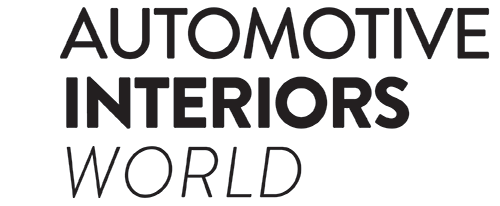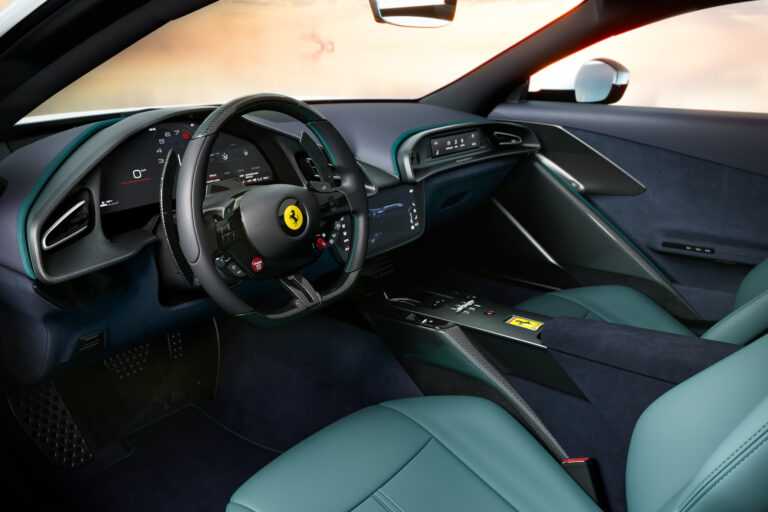Ferrari has unveiled the Ferrari Amalfi, a front-mid-engine V8 2+ coupé that replaces the Ferrari Roma in the Prancing Horse line-up.
The Ferrari Amalfi reinterprets classic berlinetta, blending tradition and innovation. The car’s design focuses on a fluid and minimalist approach, with sculpted volumes and clean surfaces. The front is dominated by a large air intake and a long, sculpted bonnet housing the 640cv turbo V8 engine. At the rear, the integrated active spoiler contributes to high-speed stability, while forged wheels and carbon fiber details complete a sporty and sophisticated aesthetic.
Interior styling
The interior design has been simplified, emphasizing a clean and contemporary language using premium materials and integrated technological solutions.
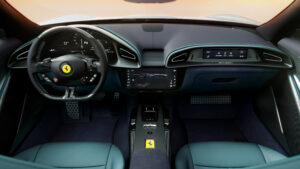
The Amalfi adopts a dual-cockpit layout prioritizing both the driver and passenger in two separated yet visually connected cells. A line of symmetry reflects the dashboard, door panels and central tunnel across the driver and passenger.
The dashboard features, for the first time, a monolithic layout in which the instrument cluster and air vents are fused into a single block. The central tunnel, milled from a block of anodized aluminum, houses functional elements such as the gear selector gate, key slot, wireless charging pad and secondary controls. The door panel grips are integrated into sail-like shapes, while the woofers are hidden behind perforated aluminum surfaces.
The interior color palette aims to reflect the car’s bold character with material and color combinations to emphasize sportiness.
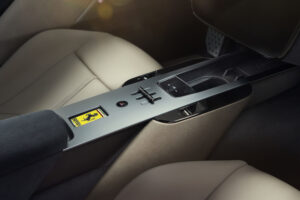
Optional comfort seats are available in three sizes and are equipped with 10 air chambers for the massage function, with five programs and three intensity levels, together with ventilation for both seat and backrest.
Addressing audio, the optional Burmester audio system features 14 speakers and 1,200 watts of power. Ring radiator tweeters have been added to enable clear high frequencies, while three listening presets allow users to personalize the acoustic experience to their preferences.
Human machine interface (HMI)
The latest steering wheel, equipped with physical buttons, marks a return to tactile controls and has been designed with ergonomics in mind. On the left side, Ferarri reintroduces the iconic aluminum start button.
Controls have been distributed based on functionality. On the left spoke are advanced driver assistance system controls, adaptive cruise control, and phone and voice commands, while on the right are the selectors for display views, windscreen wipers and indicators. On the back, two rotary dials manage volume and station selection.
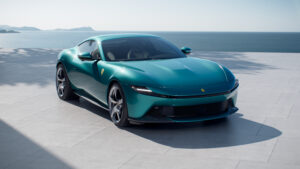
The HMI system has been structured around three main displays. The 15.6” digital instrument cluster provides all driving and vehicle dynamics information. At the center of the dashboard, a 10.25” capacitive touchscreen allows both driver and passenger to access key functions: multimedia, radio, phone, screen mirroring, climate control, seat adjustments and vehicle settings. Finally, the 8.8” passenger display shows parameters such as G-forces and engine revs.
The MyFerrari Connect system allows remote monitoring of the vehicle’s status via a dedicated app. The vehicle is compatible with Apple CarPlay and Android Auto, while wireless smartphone charging is integrated into the central tunnel.
In terms of safety and driver assistance, the Amalfi is equipped with a comprehensive suite of next-generation ADAS systems. Available features include adaptive cruise control, automatic emergency braking, blind spot detection, lane departure warning, lane keeping assist, automatic high beam, traffic sign recognition and assistance and driver drowsiness and distraction detection, as well as optional surround view and rear cross traffic alert. All systems are configurable.
Bentley’s Azure models for the Continental GT, Continental GT Convertible and Flying Spur line-ups also utilize a V8 engine, in addition to driver assistance technologies for smoother, safer journeys.
